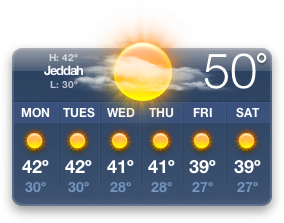If you hate math, traveling overseas might be somewhat of a headache. You knew the balmy reputation of Jamaica before you booked the ticket, yet you packed a couple of sweaters, just in case, when you read the average temperature was 25 degrees. And you had to do a double-take when you noticed the flight departed at 18 o’clock. What the hell is 18 o’clock, anyway?
The United States is pretty much the oddball when it comes to numerical representations—still using weights and measures descended from the British imperial system (pounds, miles, feet and inches), Fahrenheit for temperature, and a twelve-hour am-pm clock instead of the metric system, centigrade temps, and “military time” used all over the rest of the world.
So to keep you on top of the numbers game when traveling abroad, I’ve provided a couple of handy equations that will give you equivalents for the most commonly required measurements. Yes, this involves addition, subtraction, and sometimes, multiplication and division. You might find a calculator to be especially nifty if you haven’t studied any of these operations since the sixth grade.
· Time: The 12 versus 24-hour clock
This one is easy. Most digital clocks outside of the United States (have you ever seen a traditional clock go past 12?) run on a continuous 24-hour time scheme, as does the US military. This means there’s no 6pm. There’s 18:00. The time between 1:00 and 11:59 is automatically considered morning, just as 12:00 until 12:59 is automatically considered afternoon. Once the clock strikes 13:00, the math part comes in. From every hour until 23:59, you’ll have to subtract 12 from the hour slot (18:00 – 12 = 6:00pm). The midnight hour goes from 0:00 to 0:59. Neat, right?
· Temp: Fahrenheit versus Centigrade
A Uruguayan math teacher taught me this trick. If you’re already overseas and the temperature is something like 32 degrees Centigrade, you simply multiply by two, then add 32 for an approximate temperature in Fahrenheit. So, 32 × 2 = 64 + 32 = 96. Don’t be fooled—water don’t freeze at 32°C. For the reverse, maybe 32 degrees Fahrenheit, you have to subtract 32, then divide by two. So, 32 – 32 = 0 ÷ 0 = 0°C. Brrrrr. (For the exact temperature, use 1.8 instead of 2 to multiply or divide).
· Distance: Miles versus Kilometers
Get your calculators out for this one. One mile equals 1.61 kilometers. That means, if the distance between the airport and the nearest Hilton is 100 miles, it is 161 kilometers away. 100 × 1.61 = 161 (I know, I did an easy one). For the reverse, if a distance is 145 kilometers, then you multiply by 0.62 to get the mileage. 145km × 0.62 = 89.9 miles.
· Altitude: Feet versus Meters
This one’s also for the big brains. One foot equals 0.3 meters. Damn. So someone six feet tall is only 1.8 meters (or 180 centimeters). 1 × 0.3 = 1.8. A meter, however, is 3.28 feet. That means if the altitude of a place is 3,000 meters, you’re actually 9,840 feet into the air. 3,000m × 3.28 = 9,840’.
· Weight: Pounds versus Kilos
For the muscleheads, most gyms overseas have weights in both pounds and kilos, and many of your fellow gym rats can give you approximate conversions. But in Brazil, for instance, the gyms feel like they’re far enough away from the United States that they don’t have to use pounds, and you may end up learning the hard way that 20 kilograms absolutely does not equal 20 pounds. The rough conversion is that one pound is almost half a kilo (actually 0.45), while one kilo is a little more than two pounds (2.21 to be exact). Anyone on a structured workout plan, which can be difficult to maintain while on the road, might need exact conversions, as rough approximations can grow rougher rather quickly. A 20-kilo dumbbell equals 44.2 pounds (20kg × 2.21 = 44.2lb), while a 20-pound dumbbell weighs 9 kilos (20lb × 0.45 = 9kg). Gastronomists can also use this equation for buying rice, grains, vegetables and such at super- and flea markets.
Happy measuring.

